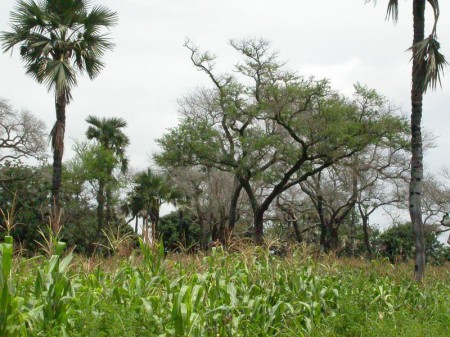Good news from Landscapes for People, Food and Nature. Orphan crops in Agricultural Landscapes, a recent post, tells us why the Green Revolution never took off in Africa (too diverse) and that part of the solution is that “Africa’s varied ecosystems do contain crop species very important to African farm families, if not to science”. The piece goes on to sing the praises of the African Orphan Crops consortium, which is devoting $40 million to sequence 24 species by the end of 2014. You know what we think of that. 1
There’s nothing new to be said about the AOC consortium, but one question remains. Why, in seeking to illustrate orphan crops, does LPFN illustrate its piece with a photo of a hand holding what is clearly Phaseolus vulgaris, a species that is beloved of science, small farmers and consumers in the Great Lakes area of Africa and beyond? 2 We asked the photographer, but he is on assignment. However, our sources in the Nairobi markets confidently identified these, and said that the big yellow ones are known as Ugandan beans. Which is nice, because the actual caption with the photo says that it shows “Constantine Kusebahasa at the market, Rwenzori Mountains, Uganda”. Maybe he’s an orphan.

Oh look! A photo of Faidherbia albida, darling of the AOC consortium, in a landscape, and free to use, found in the Wikimedia Commons.


African orphan crops? Cassava? Peanut? Banana? Common bean?
These are UN agencies and Northern conservation megabuck spenders who have failed in biodiversity conservation in people-excluding reserves. They now target poor farmers, thinking that if they get farms diverse enough, they can get another 15% of Africa for nature conservation through the back door.
I am not an expert, but the handful of seeds in the photo looks very much like cowpea (Vigna unguiculata), which is native to Africa.
I’m no expert either, but they do look more elongated than the cowpeas I’ve seen.
Idem on the expert thing, but the head of an international bean genebank, known to all of us, who definitely is one, expert that is, concurs that the photo is probably of common bean, of the canario type, though he would have preferred a close-up.